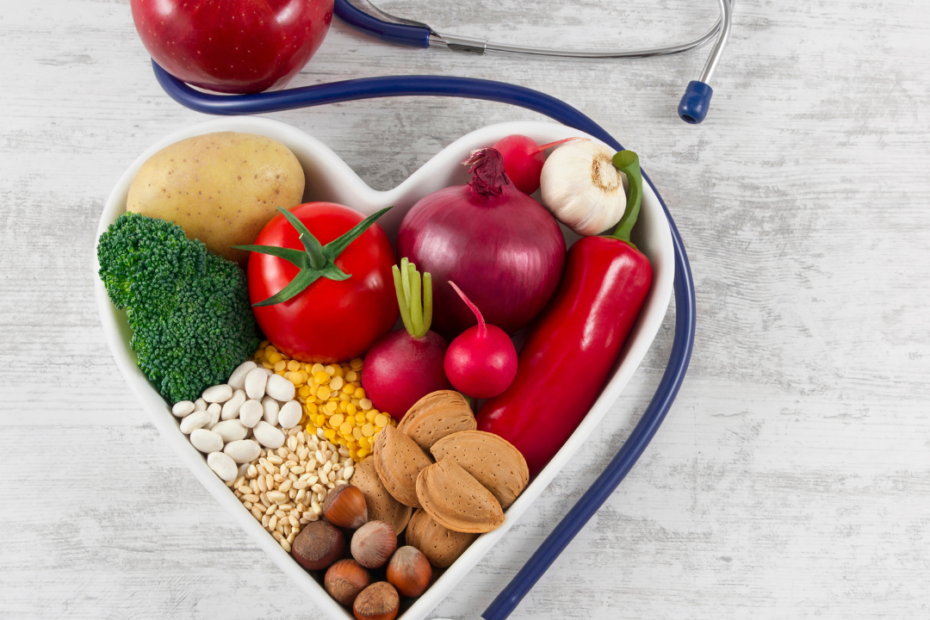February is American Heart Month, a time to raise awareness about good heart health. Heart health is extremely important to one’s well-being. Heart disease kills more people annually than all forms of cancer combined, and 72% of Americans don’t consider themselves at risk for heart disease, according to the American Heart Association. However, there are many actions you can take to improve your heart health and greatly reduce the likeliness of heart-related issues.
According to the Academy of Nutrition and Dietetics (AND), a heart-healthy diet is recommended to reduce your unhealthy blood cholesterol levels, manage high blood pressure, and lower your risk of heart disease. Try these tips for preparing heart-healthy meals.
Include Sources of Dietary Fiber Throughout the Day
- Include plant-based foods as sources of protein, including tempeh, beans, lentils, seeds and nuts.
- Make half your plate fruits and vegetables at each meal.
- Opt for whole fruits and vegetables instead of 100% fruit juices more often and don’t discard edible peels. Removing the peels on produce, such as apples and potatoes, lowers their fiber content — just be sure to wash them before preparing or eating.
- Choose whole grains instead of refined grains whenever possible.
Limit Saturated Fat
- If you eat meat, select lean cuts of beef and pork, especially cuts with “loin” or “round” in their name and drain the fat off cooked, ground meat.
- Cut back on processed meats high in saturated fat, such as hot dogs, salami and bacon.
- When you make a stew or soup, refrigerate leftovers and skim off the fat with a spoon before reheating and serving.
- Replace higher-fat cheeses with lower-fat options such as reduced-fat feta and part-skim mozzarella.
- Thicken sauces with evaporated fat-free milk instead of whole milk.
- Move toward using lower-fat milk and yogurt. Start with 2% products, then move to 1% and finally to fat-free to adjust to the new taste.
- Choose skinless poultry or remove the skin before eating chicken or turkey.
- Check the Nutrition Facts Label on food packaging for saturated fat content and to see if trans-fat or partially hydrogenated oils are listed. Food manufacturers have removed trans fats from their products, but some foods with longer shelf-life dates — such as cakes, cookies, crackers, pastries, pies, muffins and doughnuts — may still contain them. These foods also are sources of added sugar and should be limited for that reason, as well.
Reduce Salt (Sodium)
- Try and prepare food at home more often so you can control the amount of salt in your meals.
- Use as little salt in cooking as possible. You can cut at least half of the salt from most recipes.
- Skip the table salt and be mindful when adding other higher-sodium condiments such as soy sauce, ketchup, pickles and olives to your food at the table.
- When choosing canned foods, select “reduced-sodium” or “no-salt-added” soups and vegetables.
- Check the Nutrition Facts Label for sodium and choose products with lower sodium content.
- Season foods with herbs, spices, garlic, onions, peppers and lemon or lime juice to add flavor.
“Genetics plays a role in cardiovascular disease, so it’s helpful to know your family history,” adds Registered Dietitian, Janyce. “If your father or brother had coronary heart disease or a heart attack before the age of 55, or your mother or sister had coronary heart disease or a heart attack before the age of 65, that will put you at increased risk.”
Regular physical activity can help prevent, treat, and sometimes even alleviate some of the most common chronic conditions such as high blood pressure. A recent blog post from the Waverley Oaks Personal Training Team shares tips & tricks for sticking with a fitness regimen.
Content submitted by Janyce Gately – MS, RD, LDN, CHWC
Reach out to our Registered Dietitian, Janyce, for more insight ways you may be undermining your best efforts and to learn best practices for sustainable weight loss.
